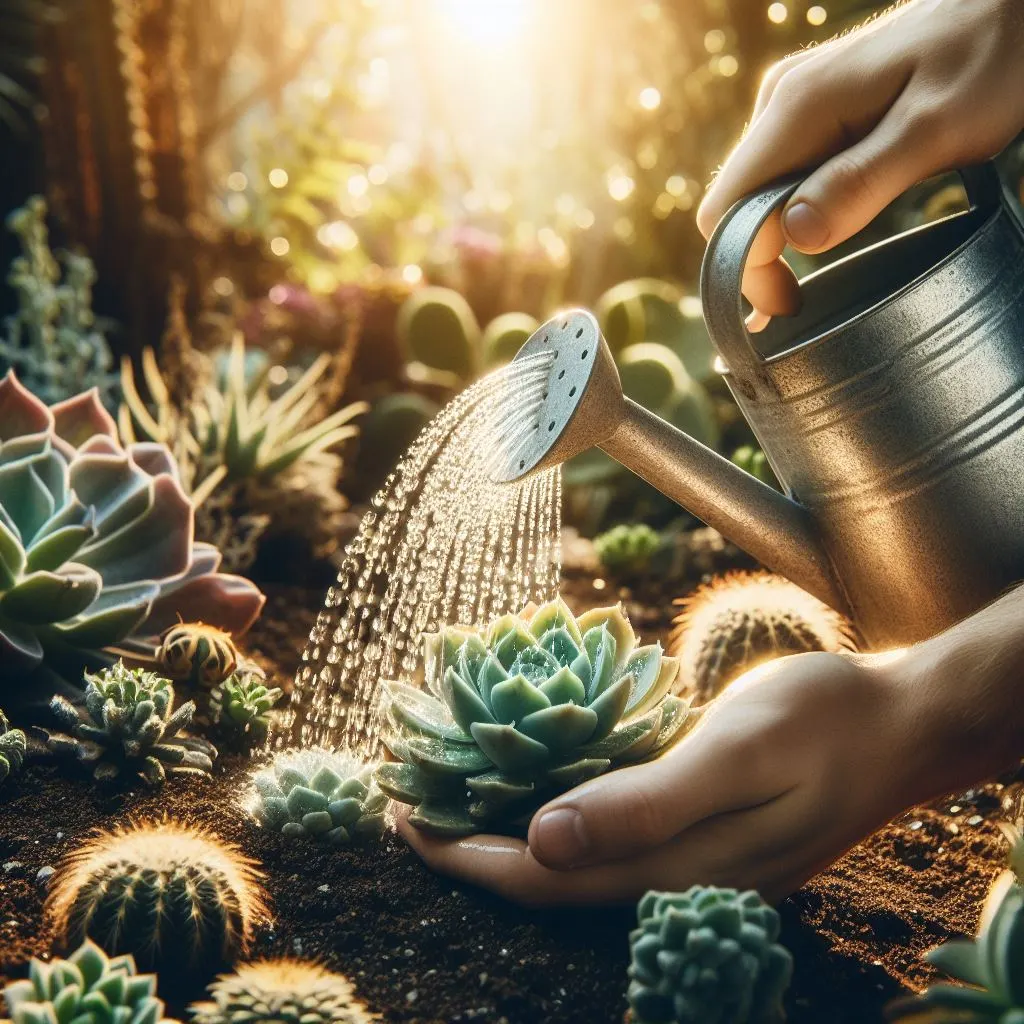Watering Tips for Desert Succulents
Introduction
Desert succulents are remarkable plants that have evolved to survive in some of the harshest environments on Earth. From the spiny cacti of the Sonoran Desert to the plump leaves of the jade plant, these species have developed unique adaptations to conserve water and thrive in arid conditions. Despite their water-storing abilities, proper watering remains essential for their health and vitality. In this comprehensive guide, we will delve into the intricacies of watering desert succulents to help you cultivate lush and thriving plants in your home or garden.

Understanding Desert Succulents
Desert succulents belong to a diverse group of plants known for their ability to store water in specialized tissues. Their thick, fleshy leaves, stems, or roots act as reservoirs, allowing them to withstand long periods of drought. This adaptation is crucial for survival in deserts and other dry regions where water availability is limited. Additionally, many succulents have evolved mechanisms to minimize water loss, such as CAM (Crassulacean Acid Metabolism) photosynthesis, which enables them to open their stomata at night to reduce daytime water loss.
Watering Basics
While desert succulents can survive prolonged periods without water, they still require regular watering to thrive and maintain their health. Understanding the basics of watering is crucial to prevent common issues like overwatering or underwatering, both of which can harm succulents.
How Much Water Do Succulents Need?
One of the most common misconceptions about succulents is that they require minimal water. While they are drought-tolerant plants, they still need adequate moisture to support growth. The key is to water deeply but infrequently. When watering succulents, ensure that the soil is completely dry between waterings. Stick to a watering schedule of once every 1-2 weeks during the active growing season, adjusting based on environmental factors like temperature and humidity.
Best Time to Water Succulents
The timing of watering can also impact succulent health. Watering in the morning allows excess moisture to evaporate during the day, reducing the risk of fungal diseases caused by prolonged wetness. Avoid watering succulents in the evening, as this can leave them sitting in moist soil overnight, potentially leading to root rot or other issues.
Watering Techniques
Proper watering techniques are essential for ensuring that succulents receive the moisture they need without causing water-related problems. When watering, direct the water at the base of the plant, near the soil line, rather than spraying the entire plant. Use a watering can with a narrow spout or a drip irrigation system to deliver water directly to the root zone. Ensure that water penetrates the soil deeply to encourage healthy root development.
Signs of Overwatering and Underwatering
Monitoring your succulents for signs of overwatering or underwatering is crucial for maintaining their well-being.
How to Identify Overwatering
- Leaves appear swollen, mushy, or translucent
- The plant may exhibit signs of root rot, such as blackened or mushy roots
- Mold or fungal growth may develop on the soil surface
How to Identify Underwatering
- Leaves may become shriveled, wrinkled, or dried out
- Stems may appear thin or weak
- Growth may slow down, and the plant may become less vibrant
Tips for Healthy Succulents
Beyond watering, several additional factors contribute to the overall health and vigor of desert succulents.
Proper Soil and Container Selection
Choosing the right soil and containers is crucial for succulent success. Use well-draining soil specifically formulated for succulents or create a mix using potting soil, perlite, and coarse sand. Ensure that containers have drainage holes to prevent water from accumulating at the bottom, which can lead to root rot.
Sunlight and Temperature Considerations
Most desert succulents thrive in bright, indirect sunlight. Place them near south or west-facing windows indoors or in sunny, well-drained spots in your garden. However, intense, direct sunlight during the hottest part of the day, especially in summer, can scorch succulent leaves. Monitor light exposure and provide shade during peak sun hours if needed. Maintaining temperatures between 60-80°F (15-27°C) is generally ideal for most desert succulents, although some species may tolerate slightly cooler or warmer conditions.
Conclusion
In conclusion, mastering the art of watering is fundamental to the success of your desert succulents. By understanding their unique water needs, adopting proper watering techniques, and paying attention to signs of moisture stress, you can nurture healthy, vibrant plants that thrive in arid environments. Remember that while succulents are resilient, they still require care and attention to flourish. With these watering tips and a bit of green-thumb know-how, you’ll be well on your way to creating a stunning succulent garden or indoor display. Happy gardening!